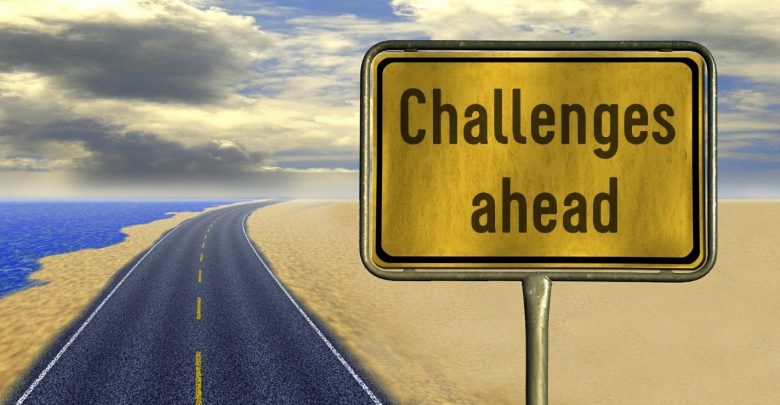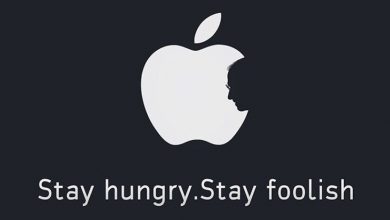
Some years ago I visited Croatia and its beautiful Plitvice lakes. The tour of the region brought us to a lake, which was placed on an actual old mineshaft that now represented a beautiful turquoise lake.
Near that lake, there was a steep cliff around 10-15 meters high from where the locals were diving in. The picturesque scenery, good mood and people who already dived in, tempted me to get an instant desire to do the same. It was a steep and slippery climb to the top of the cliff. During the climb I wondered if it is actually a good idea to continue. When I was up on the cliff and looking down, I asked myself – do I really wanna do this? Am I sure I can dive in safely? How good am I at diving? How afraid am I from heights?
I looked back, and I saw several people behind me waiting for their turn, blocking the road back down. That meant I was under pressure of the “audience” who were my friends and other people who were waiting for their turn. The slippery rocks looked even more dangerous in that moment. At the same time I didn’t want to dive in, or to climb down the slippery cliff in front of everyone. So I did just what everyone would have done, I panicked. I was blocked for a fair amount of time.

The comfort zone is where we feel safe, in control of the situation, we do things with ease and we are in a mode of an autopilot. We feel confident in our abilities and we can predict what is going to happen. We are calm and centered and very often we multitask with other things. Just like while driving a car, we are paying attention to road signs, having a conversation with our friends in the car and we are listening to music.
The stretch zone is just outside of our comfort zone. In this zone are the things that we want to do and we think we can do them, but we don’t know exactly how, because we have never done anything like that before, or we are just not good at it.
In the stretch zone we have some understanding of how things work, we can foresee some of the future, however, we feel it is not enough and it requires much more focus and effort in order to do it. Imagine how you felt when you were learning for the first time how to drive a car. The music was distracting, everything was confusing, you were barely talking, you were focused on the driving and paying attention to the signs, while in the same time trying not to forget to break or change the gears.
Once you learn and master those skills, the stretch zone becomes your comfort zone. This is the place where learning happens. From learning to knowing. The learning process is often going front and back between the comfort zone and stretch zone, while your comfort zone is increasing.
The panic zone is just outside the stretch zone. Those are the things that we don’t know how to do, the ones we don’t understand or that we don’t want to do. The panic zone sometimes consists of situations which might bring us most gain, that’s why we take them into consideration. In these situations we don’t understand how things work, we doubt our abilities to do what is needed and we don’t have the control over the situation.
That’s why we feel anxious, fearful and stressed as we cannot foresee the future, since the situation requires a lot of energy and there is a lack of structure and clear vision of how things should be done.
Usually, in the panic zone many different hormones are produced that have influence to our behavior and well-being such as epinephrine and norepinephrine which elevate the blood pressure or corticosteroids which influence the immune system and prevent the creation of new neurons (Resonant leadership, 2005; Boyatis, McKee, Harvard business school press)
Premeditated vs unpredictable challenges
I really like taking on challenges in different parts of life, regardless if it is doing a new workshop about conflict resolution with people from conflict-countries or diving in a beautiful lake in Croatia. It gives me the thrill of learning something new, becoming good at something and developing a new skill. Sometimes I take on challenges because I want to try something new and see if I like it. Other times it is because overcoming the challenge will take me closer to my other goals. Maybe you recognize yourself in one of these reflections, or maybe you have other motives such as sparking your creativity, finding something that you will be excited about, having the freedom to make a choice or testing your limits.
Many times it happens that we don’t want to take on challenges but our life or work situations are bringing us to such challenges. We often encounter situations where the only path is going in challenging and unpredictable situations and there is no other way, sometimes the situations come because we are unaware of what lies in the future. Sometimes pursuing different goals unconsciously takes us to very challenging situations.
That’s part of life.
But how can we increase our ability to challenge our own competences in terms of being a trainer?
I believe a few attitudes and behaviors help me challenge myself in a planned or spontaneous manner.
Self-awareness vs. unawareness
In my opinion the first step in order to increase our ability to take on challenges is to build a better understanding of ourselves, our own abilities and set of competences. If we are talking in terms of being a trainer, then we are talking about self-assessment of our behaviors, attitudes, skills and competences. There are several ways that we can do this self-assessment:
- Self-assessment models
-
- such as 360 degrees assessment or SWOT analysis which can help you to structure a general self-assessment of your competences
- Trainer self-assessment models – such as the Appraiser which an app that helps you to do a self-assessment on your skills and competences based on the European Trainers competence model or the self-assessment mode from SALTO-YOUTH
By knowing ourselves, when a challenge approaches us, we will be able to recognize our personal limitations and act accordingly. We might decide to continue with the challenging situation or to take a step back. We will be aware of our capacity to address the challenges and therefore to make a conscious decision if we want to go into the stretch zone or come back to the comfort zone.
Setting a learning goal and learning path
If we are aware of our comfort and stretch zones, if we are aware of our limitations and knowledge base, we might decide that we want to increase our knowledge base, either right now or in foreseeable future. In this case, we can start our preparation process for the learning experience.
There is a famous saying – Luck is when preparation meets opportunity.
The learning plan might help us to decide that we want to step back from the challenge. If the level of energy and sacrifice that are needed is too high for taking on the challenge, we might decide it is not worth it and step back. We can prepare, take some smaller steps and in some time try again.
Failing enables us to learn
I am a person that fails quite often. I take on a variety of challenges on a regular basis and I sometimes fail in realizing them. However, I don’t have an approach of desperation and dissatisfaction (the way some people see failure). I see it as an opportunity which brings me one step closer to the goal. I just don’t give up so easily, and try again, and fine tune, make smaller step, or adjust, reorganize in a timely manner.
When having such an attitude, the stress and fear of failure decrease so I am more focused on adjusting and figuring out a new solution, rather on hyperventilating and being blocked in the panic mode.
Attitudes that can help with our readiness for challenging situations and challenging our competences
Playing on the strengths and weaknesses – before I jump on a new project, I take a few minutes to ask myself a few questions:
– Do I know how to do that?
– How much energy would it require from me to learn?
– That area is not my strength, do I have people around me from whom I can learn how to do it?
– Do I have the needed resources? Can I find them?
– Do I have other priorities at this moment that I have to focus on? How would it interfere with them?
– Will this new thing take me of the focus that I have?
These reflections, and many others depending on the situation, help me to make a conscious decision if I want to challenge myself or not.
Diversification of work responsibilities
It is very well known of all the theories and books written on diversification of work responsibilities, and how repetitive tasks and lack of challenge might lead to boredom, lack of productivity, injuries, losing interest and focus. Therefore, challenging myself is part of my work routine to combine two things – doing something new and interesting and learning while challenging myself.
Therefore, my work is never boring. If it becomes boring, I will do something more, something new, and something different.
Re-plan and restructure
In many challenging situations, we have several tools that help us modify and adjust the challenges that are in front of us.
Downsize – most of us have experienced the following dilemma – a deadline that is approaching, and there is not enough time to reach the goals. What do we do? Do we sacrifice and work harder day and night and achieve the goals, no matter what? That will leave a mark on our health, energy, composure. It’s better to make sure that you downsize and reach the new goals, than improvise, sacrifice and burn out.
Reschedule – when planning, always leave time for unpredictable situations, whatever they might be. Even if it means that you will have time left on the end, you can use this time to rest and replenish yourself, which is crucial. Tight planning hinders the flexibility. Having the possibility to reschedule, also relieves the stress and pressure that if something goes wrong, there is still time for corrective actions and moving back to the comfort zone.
Delegate – in case you are not able to overcome the challenges yourself or you realize that you are wont able to deal with it on time, it is better to timely delegate while there are still options.
Outsource part of the challenge – when we take on challenges, we expect that everything will be done by ourselves, our team or our partners. Outsourcing one part of the tasks, the most time consuming on the ones that are outside your comfort zone, might just be the solution you need.
Act on time – often we find ourselves in indecisiveness, it seems like there is no good option at all. I will be late with the deadline and I am aware that it will take so much sacrifice to finish it. Yet I continue and do nothing about it. I do not ask for help, I do not outsource, I don’t delegate. I contemplate and I wait until its too late, and there are no options left. It better to take corrective actions early, and it takes courage and confidence to do it.
There are probably many other attitudes since they are mostly individual and they don’t work in all situations. These, but other attitudes also, can enable us to increase our capacity and readiness to take on new challenges and to challenge our abilities.
How does this relate to being a trainer?
Trainers are people who are lifelong learners. They undertake many activities that give them variety of experiences. Yet, very often they fall in familiar patterns, doing the things that they know best, doing the things that work well.
Increasing our capacity as a learner is a goal for many of us. Being able to understand the process of challenging ourselves and our abilities, means that we can make decisions accordingly, tailor a process that is suited for us in term of size of the challenge, time when it happens, who is involved and what is our role.
Our increased learning capacity will enable us to create an improved working environment, we will take care of our well being and mindfulness, we will be able to increase our competences and have them become part of our comfort zone.
And in the end, to come back to the story about the lake in Croatia. After being blocked for 10 or 15 minutes, I started contemplating my choices. Despite the pressure and my friends and the rest of the people making fun of my fear and being blocked, I took the time to consider diving in or going back, several of the different scenarios. In the end, I made my decision and I dived in. I was focused, confident, prepared and scared at the same time. I remember that choice ever since and I have never again dived in from that altitude in my life.
Reflection Questions
- Do I like being in challenging situations? If not, what are the reasons? Can I address those reasons somehow?
- In which situations I would feel comfortable being challenged?
- What do I feel when I am outside of my comfort zone? Can I train myself to timely recognize those “symptoms” so I know its time to act?
- How do I recognize getting out of the stretch zone and slowly entering in the panic zone?
Take this paper when the next situation comes and use the questions to reflect. Refine the questions with time as you learn about yourself. Exercises




